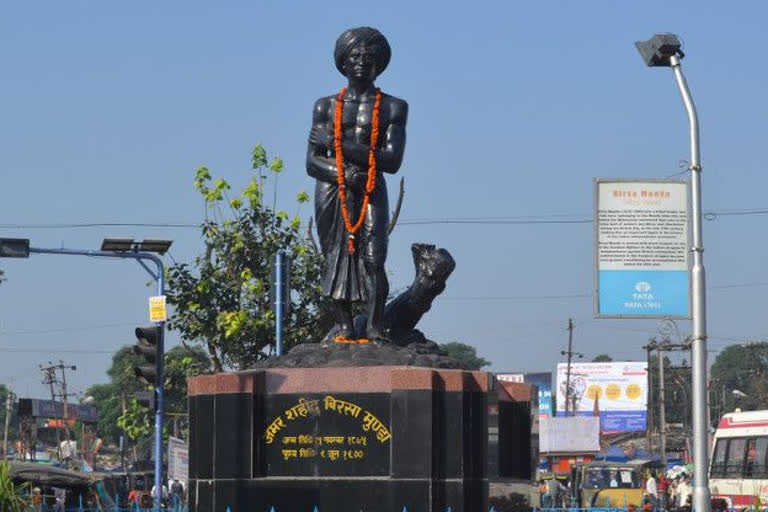Ranchi: When two decades ago the state of Jharkhand came into being on 15 November 2000, the tribals and Adivasis of the area imagined a bright future. Sitting atop rich minerals and resources, the state's backward communities hoped for development and equality that freedom fighter Birsa Munda fought for.
But, did the state achieve all that it hoped for?
After separation from Bihar, the then government of the state prepared a budget of Rs 7,174.12 crore for the financial year 2001-02. Then the per capita income in Jharkhand was 10 thousand 451 rupees. The government made continuous efforts of development in the economic, social and many other fields.
As a result, per capita income increased steadily and the graph of development in the state went up, while the index of poverty came down.
Migration of people
When the separate state of Jharkhand was formed in 2000, there were a total of 18 districts in the state, which has now increased to 24. In 2001, the budget of Jharkhand was Rs 4800.12 crore, which has now increased to 86 thousand 370 crore rupees.
Despite all this, 39.1 per cent people in the state are living below the poverty line with the rate of increase in unemployment being more than 3 (3.1%) per cent. With so many industries and job opportunities in the state, the process of people's migration in search of jobs continues.
Also read: Jharkhand Assembly passes resolution on Sarna Code
Improvement in literacy
The population of Jharkhand at the time of its formation was 2.69 crore in 2000 which is now increased to 3.30 crores according to the 2011 census. The sex ratio has also improved with there being 941 girls per 1000 thousand boys in 2001 to now rising to 948.
Similarly, the per capita income has increased from Rs 10, 294 to Rs 49,174 and literacy rate also showed improvement and it increased from 53.56 per cent to 67.63 per cent.
Rate of development
The state government has estimated the per capita income to increase to Rs 83,513 during the current financial year. Also, the growth rate in 2019-20 is 10.51 per cent and the state's gross domestic product (GSDP) is estimated to be Rs 316730.61 crore as compared to 2018-19.
Budget size increased
After the formation of the state, the government also increased the size of the budget to speed up development plans. In comparison to this, the government started taking more loans from various sectors for development schemes due to the revenue situation not being very satisfactory. This increased the burden of debt on the state.
Forward on the graph of development
Also read: Explained: Special religion code for Jharkhand's Sarna tribe
Since its formation as a separate state, Jharkhand is constantly moving forward on the graph of development. The budget format has been increased now for the development of the state, however, the debt burden has also increased from Rs 7,519 crore to Rs 85,234 crore.
Debt figure less than the government's budget
This debt burden is less than the budget of the government. Along with the government, the debt burden has also increased on every person of the state. In the financial year 2001-02, every person in the state was a debtor of Rs 2,795. Now every person in the state has become a debtor of Rs 25,906.



